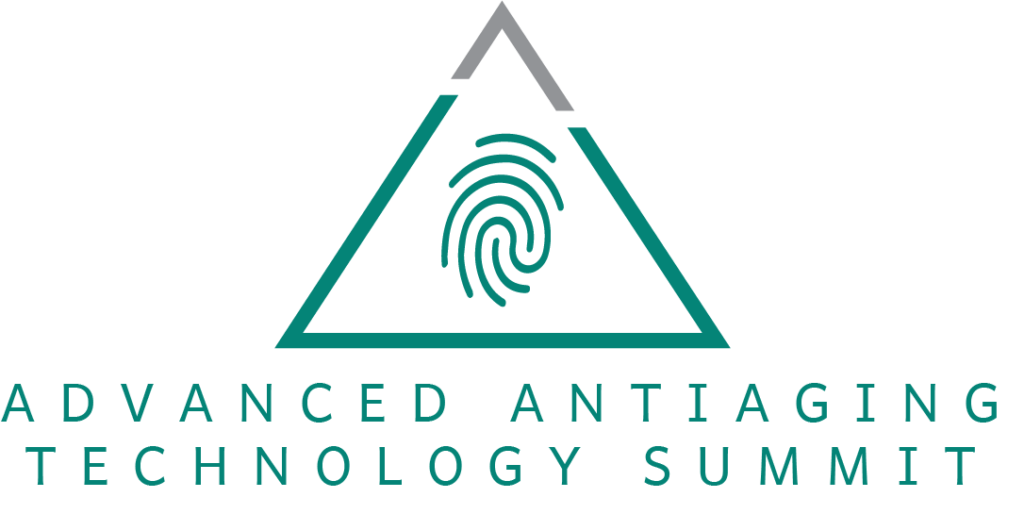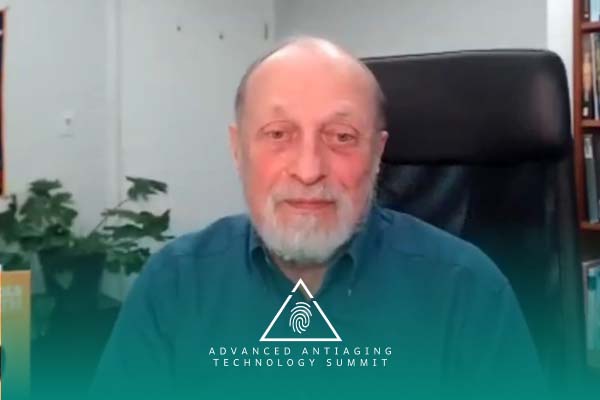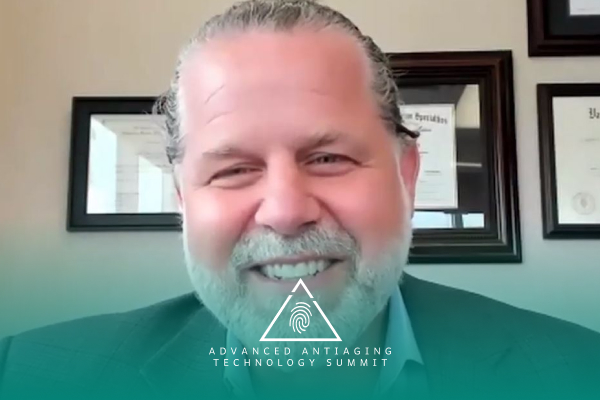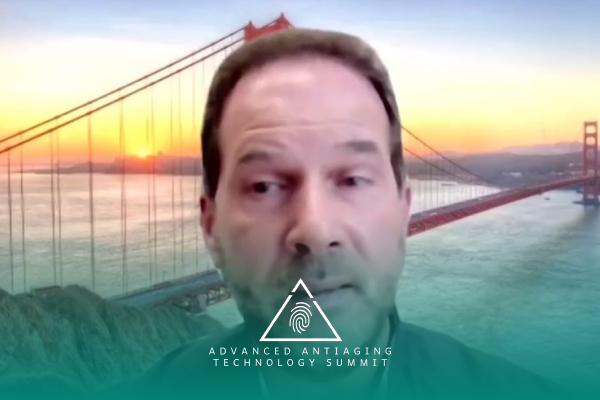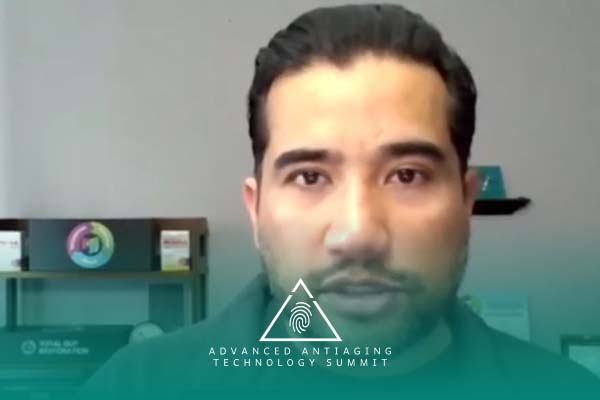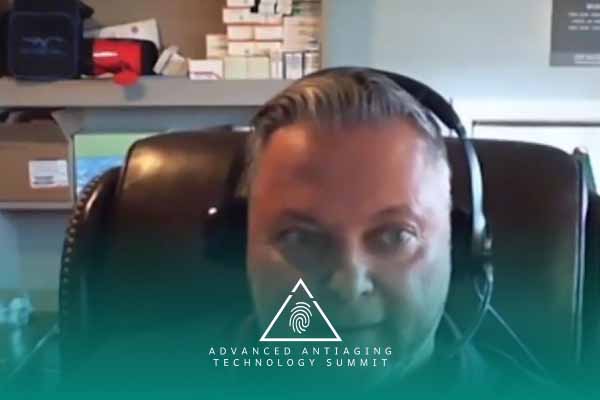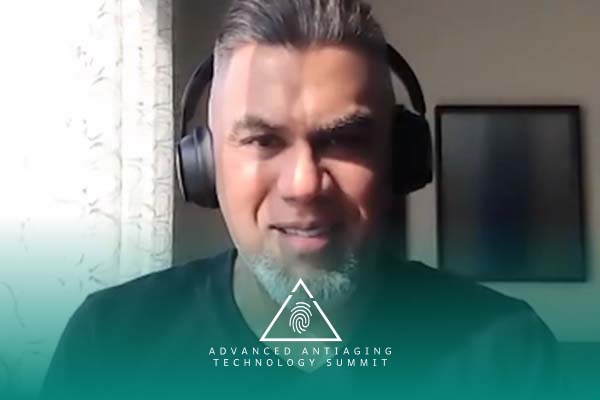Join the discussion below

Dr. Goel is a medical physician and founder of Peak Human Labs. His mission is to speak knowledge of the latest cutting edge medical tools and science in order more people to live in a Peak mental, physical and spiritual state. You can learn more about his work at longevity.peakhuman.ca. Read More
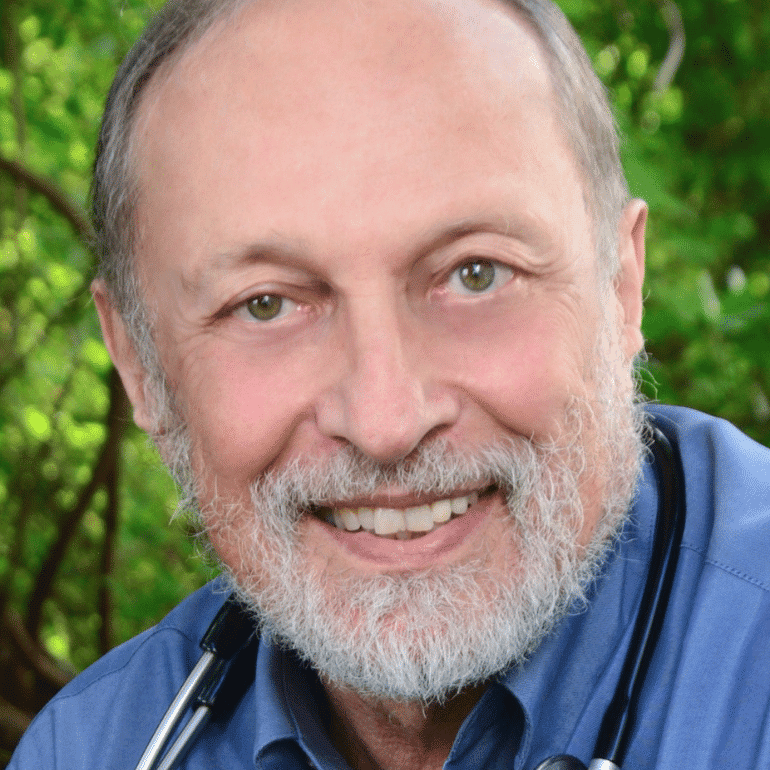
William Pawluk, MD, MSc, author of “Supercharge Your Health with PEMF therapy”, was recently a holistic doctor near Baltimore, MD. Previous academic positions at Johns Hopkins and University of Maryland. Training: acupuncture, homeopathy, hypnosis, energy medicine, nutrition and bodywork. Considered the foremost authority on the practical use of Pulsed Electromagnetic... Read More
Versatile Health Solution: Pulsed Magnetic Field Therapy, or PEMF, offers a wide range of health benefits, from pain relief and inflammation reduction to improved tissue healing and increased energy levels. Unlike static magnets, PEMF therapy is dynamic and has deeper-reaching effects.
Complementary Approach: PEMF therapy can be used alongside other treatments, enhancing their effectiveness. It complements various medical interventions, including antibiotics, nutritional therapies, and even exercise routines, making it a versatile addition to healthcare practices.
Educational Resources: Dr. William Pawluk, an expert in PEMF therapy, provides valuable information through his website and book, “Power Tools for Health.” Educating oneself about this therapy can help individuals make informed decisions about investing in PEMF devices for their well-being.
Related Topics
Aging, Amplifying Charge, Anti-aging, Applicators, Blood Vessels, Body, Cell Interaction, Charge Production, EMF, Energy, Faradays Law, Healing, Health, Health Benefits, Homeostasis, Human Use, Magnetic Field Interaction, Magnetic Field Therapy, Magnetic Fields, Magnetic Fields In Environment, PEMF, Pemf Therapy, Pulsed Magnetic Fields, Static Magnetic Fields, Time-varying Magnetic Fields, Tissue ResistanceSanjeev Goel, MD, FCFP (PC), CAFCI
Hi, I’m Dr. Sanjeev Goel, medical director of peakhuman.ca and your host for the Advanced Antiaging Technology Summit, and today, I’m very glad that you could join us, as I’ll be speaking with Dr. William Pawluk. Dr. Pawluk is a holistic doctor. His previous academic positions at Johns Hopkins and University of Maryland. He has training in acupuncture, homeopathy, hypnosis, and bodywork, and he’s considered the foremost authority on pulsed electromagnetic field, PEMF therapy in North America. He’s been on the The Dr. Oz Show, which I’m sure he’ll tell us about, and he’s been working on PEMF therapies for over 25 years. You can check out his website at www.drpawluk P-A-W-L-U-K.com, and he’s the author of two books on PEMF and how they’re, how they impact your health. So Bill, if you want to first tell me, what’s your, how do you feel about getting onto the summit and we’ll get going.
William Pawluk, M.D., MSc
Well, aging is one of my special interests. Magnetic field therapy impacts life in general, but magnetic field therapy absolutely impacts aging, so I’m very happy to be here to talk about how PEMFs, I call it PEMFs, some people call it PEMFs, but I call it PEMFs, impact life, health, and obviously, as a result, aging.
Sanjeev Goel, MD, FCFP (PC), CAFCI
Right, okay, so maybe just take me, I’m a real beginner in this and and I’ve seen some of the machines but I didn’t really understand, what are pulse electromagnetic waves?
William Pawluk, M.D., MSc
All right, so these devices are actually, they’re complicated but they’re very simple. The basic idea behind a magnetic field produced by current flowing through a wire. That’s how a PEMF is produced. Now that you have a machine that’s essentially driving current into a wire that could have, that can be a radio. It could be anything that drives current into a wire, so all our electricity in our homes, all those wires, are producing magnetic fields to varying degrees, and we obviously, people know about power lines and the magnetic fields the power lines produce because they’re huge.
Sanjeev Goel, MD, FCFP (PC), CAFCI
Right.
William Pawluk, M.D., MSc
So the magnetic fields are a lot bigger, but those are magnetic fields that are essentially uncontrolled as far as humans are concerned, as far as human health is concerned, whereas PEMFs, pulsed electromagnetic fields, are designed for human use, specifically designed for human use. So then you have an emitter, you have a device that produces the current that’s flowing down wires. As it flows out of the wires, you get what are called coils, and these coils become part of what’s called applicators, and those coils then, as you wind copper, typically copper, into a coil and you drive in current into that coil, the more turns of that wire you have, the bigger the magnetic field is. So essentially as current flows down a wire, what happens then is that a current flowing through a wire is subject to something called the right hand rule, so as the current is flowing through the wire, so the thumb is the current flow, and the fingers wrap around the wire, that’s the magnetic field they produce by the current flowing in the wire, so the magnetic field is basically perpendicular to the flow of the current, and as you pulse the current, what happens? It goes like that.
Sanjeev Goel, MD, FCFP (PC), CAFCI
Right.
William Pawluk, M.D., MSc
Right, automatically, you produce a magnetic field. It’s hand and glove, that’s why it’s called electromagnetic. You cannot separate the electrical from the magnetic.
Sanjeev Goel, MD, FCFP (PC), CAFCI
Got it.
William Pawluk, M.D., MSc
But what we’re using is we’re not using the electrical for PEMF therapies, we’re using the magnetic. As we know, in health in general, you can apply an electrical current to the skin, like with TENS units or other electrical stimulation, but it doesn’t penetrate very deep into the body because skin offers a huge amount of resistance. A magnetic field goes right through the body, as if the body doesn’t even exist. Nothing blocks a magnetic field except maybe metal, and metal doesn’t even block it, it deflects it, right? It still passes on, passes them out. As far as the body’s concerned, it passes through the body completely, and that’s important. So imagine, a magnetic field passing through the body is like the wind blowing through the trees.
Sanjeev Goel, MD, FCFP (PC), CAFCI
Got it.
William Pawluk, M.D., MSc
To a magnetic field, the body is like air, almost entirely air. As it passes through the body, it may meet some degrees of resistance like the wind would in the trees, but it’s still gonna keep going. The tree or the leaves are not gonna stop the magnetic field. It made divert it, it may change it, it may slow it down, change its path a little bit, but basically, it’s gonna go all the way through, and the human body is exactly the same, so all the action of a magnetic field in the human body depends on the interaction of the field passing through the body with the structures of the body, and most of the action in the body, based on Faraday’s law, Maxwell’s equations, Gauss’ law, et cetera, is that a magnetic field interacts with charge.
Every atom, every molecule, has charge. In between the cells, there’s charge, in between the organs, there’s charge. So what happens then as the magnetic field is passing through, ’cause passing through the cells and organs equally. It’s not being diverted from one organ to another organ. It passes equally as if they weren’t even there, and as it passes through then, it initiates the production of charge in the body, interacting with the charge that’s already there.
Sanjeev Goel, MD, FCFP (PC), CAFCI
Okay.
William Pawluk, M.D., MSc
All right, so then what you’re doing is you’re amplifying, you’re increasing, the amount of charge of the body, and when you increase the charge, you’re increasing energy, but at the same time, you’re causing all kinds of molecular actions to be activated by the field passing through. So as you can imagine, wind blowing through the trees, what is it doing to a tree? The wind blowing through trees wakes up a tree. Wind blowing through the trees causes branches to be moving, which generates electrical charge. That’s called piezoelectric fields. Same thing with our bones. If we bend our bones, that you can get charge, you can measure the charge difference in our bones when we bend them, so when we’re walking, we actually create tension in our bones that causes the production of electromagnetic fields. When you contract a muscle, you create charge and you create magnetic fields. So the body produces its own magnetic fields. They’re very tiny but it has its own magnetic field, and so the magnetic field that we’re applying to the body interacts with that magnetic field and interacts with the charges, which then create this huge host of actions in the body.
Sanjeev Goel, MD, FCFP (PC), CAFCI
So why is it pulsed? Like is that’s, what’s so specific about this type of therapy than versus magnetic fields we encounter in the environment?
William Pawluk, M.D., MSc
Well, there’s basically two types of magnetic fields. There are what are called static magnetic fields, like the fridge magnets.
Sanjeev Goel, MD, FCFP (PC), CAFCI
Okay.
William Pawluk, M.D., MSc
Or regular bar magnets or horseshoe magnets, they’re static. The magnetic field has been created in that material by an application of a magnetic field to that material, and then the molecules become reoriented and the magnetic field becomes fixed permanently.
Sanjeev Goel, MD, FCFP (PC), CAFCI
Like a mag-
William Pawluk, M.D., MSc
It’s not shifting, it’s permanent. They’re what we call static. Then on top of that, there’s what are called time-varying magnetic fields, which is what a current flowing through a wire is. A current is flowing at a specific rate or a frequency.
Sanjeev Goel, MD, FCFP (PC), CAFCI
Yes.
William Pawluk, M.D., MSc
At a certain voltage, and because it produces this magnetic field, it’s expanding and collapsing all the time. So a static magnet applied to the body, it’s like me holding my hand, there’s not much going on. It’s very passive, so the magnet is just there, but the fluids in the body, the veins, the nerves, et cetera, are interacting with that magnetic field, and then produce their own little amount of charge.
Sanjeev Goel, MD, FCFP (PC), CAFCI
Right.
William Pawluk, M.D., MSc
Right, but if you have a pulsing magnetic field that’s going like this, there’s a lot more action going on.
Sanjeev Goel, MD, FCFP (PC), CAFCI
Got it.
William Pawluk, M.D., MSc
And the intensity of the magnetic field determines this, the type of magnetic field it is determines how much charge is produced in the body, and that’s subject to a law called Faraday’s law. Faraday’s law basically says a magnetic field interacting with charge increases, causes charge production. So we’re relying on Faraday’s law for the body to interact with the magnetic field to produce charge to produce change and and result in, you know, health, healing, et cetera.
Sanjeev Goel, MD, FCFP (PC), CAFCI
So does more charge, more electromagnetic field result in more health benefits?
William Pawluk, M.D., MSc
Yes and no. Happily, magnetic fields passing through a healthy body do very little.
Sanjeev Goel, MD, FCFP (PC), CAFCI
Okay.
William Pawluk, M.D., MSc
So healthy cells ignore a magnetic field. They can be sort of set, they can become aware of it in a sense, but because they’re healthy, they have the ability to resist. There was a study done in Virginia, University of Virginia, where they stimulated the brachial artery with a magnetic field and had very exquisitely sensitive equipment to measure the diameter of the blood vessels. And what they saw is a very rapid and tiny amount of increase in the diameter of the blood vessel. So the blood vessel dilated. This was healthy cells on healthy people.
Sanjeev Goel, MD, FCFP (PC), CAFCI
Got it.
William Pawluk, M.D., MSc
The blood vessel dilated, and within microseconds, literally microseconds to milliseconds, it collapsed, and then it came back to normal. So the body’s always trying to create homeostasis, the body’s always trying to put itself into what is basically its natural state that’s called homeostasis. So in this case of the healthy veins and blood vessels, they did react to the magnetic field, but they came right back to normal right away. So magnetic field, most of the benefits from magnetic field therapy accrue to cells that are out of balance, are not healthy, that are sick, that are deranged, disorganized, all the sort of negatives that we can kind of connote with non-health, and aging by itself is a, it’s a natural process but at the same time, it’s a decaying process, it’s a process of things breaking down and not having the ability to sufficiently or adequately repair themselves. So magnetic fields help more with cells that are out of balance, whatever the cause might be.
Sanjeev Goel, MD, FCFP (PC), CAFCI
Right, so an inflamed cell, like how does, what’s a cell out of balance, an inflamed cell or?
William Pawluk, M.D., MSc
You name it, trauma, cuts, burns, freezing, heat, radiation, lack of oxygen, lack of nutrients, all the different things that can injure a cell. Anything that can injure a cell is basically causing the cell then to become unbalanced, and then the body needs help to restore it. Now the body allowed, so if you get caught, if you have surgery, if you have an appendectomy, if you have your appendix out.
Sanjeev Goel, MD, FCFP (PC), CAFCI
Right.
William Pawluk, M.D., MSc
Right, what does the doctor, what does the surgeon do? Sews it back up again, crosses his fingers, and said, okay, go home and fix yourself. Right, repair from my injury that I caused you. I caused you that injury to save your life maybe, but still I caused you another injury on top of one you had already. Right, and then what your body does is your body, we know that it has a natural capacity to heal itself, but we also know that different people with different health issues and aging don’t repair well. They’re too slow to repair. If you’re a diabetic, your circulation’s compromised, your immune system is compromised, your body’s ability to repair damage in the body is decreased. That’s why diabetics often have diabetic ulcers or wounds in their extremities, right? And if they get infections or wounds or illnesses, they don’t recover fast from them like a young 25-year-old would do, a healthy 25-year-old. So there are many, many, many, many causes of things to be out of whack, and then what you try to do is to bring it back into balance, and magnetic fields will heal a wound, even a healthy person will heal a wound twice as fast.
Sanjeev Goel, MD, FCFP (PC), CAFCI
Wow, okay, so maybe let’s take us through like what have you seen, what health benefits have you seen with this type of therapy, I guess over 25 years now.
William Pawluk, M.D., MSc
So, in my book, in Power Tools for Health, the second book that I wrote, I have a chapter in there that talks about the 25 mechanisms of action of magnetic fields.
Sanjeev Goel, MD, FCFP (PC), CAFCI
Okay.
William Pawluk, M.D., MSc
And then on top of that, the next chapter is a review of the research on PEMFs for 50 different health conditions. Okay, where there are signs. Now there are others but you know that you have a limitation on what you could put in anything, in a book or website or whatever. So I chose 50 and I produced, provide the evidence. I have over 500 references in the book on the actions of magnetic fields and their effects on disease. The actions are the critical aspects of it because it doesn’t depend on the disease. It depends on the nature of the cell and its condition, and so the things that magnetic fields do for sure, that have been established for decades. What my first book was about reviewing the Eastern European research on PEMFs.
Sanjeev Goel, MD, FCFP (PC), CAFCI
Okay.
William Pawluk, M.D., MSc
That was already 30 years of research that had not yet been seen in the West. Right, so they’ve been doing this for a long, long time. Magnetic field therapy has been around in Europe for well over 50 years already.
Sanjeev Goel, MD, FCFP (PC), CAFCI
So…
William Pawluk, M.D., MSc
One of the key actions, go ahead.
Sanjeev Goel, MD, FCFP (PC), CAFCI
Yeah, no, I was just gonna say that, yeah, so for the viewers out there, how would they know that they’re a candidate? I mean, I guess they obviously could read your book, but just in a kind of nutshell, like how do they know they’re gonna be a good candidate for this type of treatment?
William Pawluk, M.D., MSc
First of all, there is no biology at all that cannot benefit from magnetic field therapy. Zero. I tell my patients regularly, from about 25 to 40, you’re in, for most people, you’re in relative balance between breakdown and repair.
Sanjeev Goel, MD, FCFP (PC), CAFCI
Got it.
William Pawluk, M.D., MSc
By the time we reach 40, all of us begin to notice that we have some creaks and rattles, and they’re varying degrees. If you’re a professional athlete or you’re an Olympic athlete, you’ll probably have a lot more creaks and rattles than the average person, but if you’re diabetic or if you have genetic disorders or you had injuries or trauma or major accidents, had concussions, then you’ve got issues that are not natural to that age between 25 and 40, so after 40, health goes down. Talk about aging. Health begins to go down, and it accelerates, right? So it starts off very slowly and then begins to accelerate, so by the time you reach 75 or 80, what percentage of Americans at age 60 have disability, have chronic conditions?
Sanjeev Goel, MD, FCFP (PC), CAFCI
Right.
William Pawluk, M.D., MSc
75 to 80%, and that’s, so again, that process of aging accelerates rapidly. So everybody could use a magnetic field, and I talk about aging as being a problem of entropy. So entropy means that you have energy in the system to maintain the form of that system.
Sanjeev Goel, MD, FCFP (PC), CAFCI
Yes.
William Pawluk, M.D., MSc
Okay, you need energy, it doesn’t happen passively. So you start to, if you don’t have enough energy, then the aging process, the entropic process, accelerates.
Sanjeev Goel, MD, FCFP (PC), CAFCI
And PEMFs gives you that energy basically.
William Pawluk, M.D., MSc
So PEMFs, because of all the actions of PEMFs, and one of the key actions is to increase ATP production.
Sanjeev Goel, MD, FCFP (PC), CAFCI
Right.
William Pawluk, M.D., MSc
Okay, but aging is also, in my book, as a physician practicing for 50 years, I’ve seen aging, as you can imagine, but I’ve, basically, my conclusion for most people, unless you have Superman genes, but even Superman had kryptonite. Right, for everybody, aging is often more accelerated and tends to go down in steps. It’s not usually a smooth curve down. A step down in aging is a cold, is a flu, is having to have your appendix out, having trauma, right? Having major social upheaval, having major emotional upheaval, economic upheaval, all these things stress us, and every major stressor is another step down, right, and then hopefully we hit a level that’s plateaued, that doesn’t step down anymore until the next incident. So I call aging death by a thousand cuts.
Sanjeev Goel, MD, FCFP (PC), CAFCI
And so if somebody is interested, how would you recommend them learning and deciding, okay, what type of device ’cause you know there’s number of devices out there. How does, it looks pretty complex, I think.
William Pawluk, M.D., MSc
It is complicated, and it’s, one the most important aspects of decision-making about what magnetic field therapy system to get is how deep does the magnetic field go, in other words, the intensity of the magnetic field. Gauss, G-A-U-S-S, gauss or gauss, is a measure of the intensity of the magnetic field. On my website, not in this book because it came out before that, I discovered that adenosine, which forms ATP, adenosine triphosphate, so adenosine is also responsible for inflammation in the body.
Magnetic fields affect the adenosine receptor and what’s been found, and there’s a blog on my website about adenosine pain inflammation, and adenosine then has been found unique, about 15 gauss of magnetic field optimally to impact the adenosine receptor to decrease inflammation. So you need 15 gauss. So if you apply 15 gauss to the skin, it’s going to work very well right there.
Sanjeev Goel, MD, FCFP (PC), CAFCI
Got it.
William Pawluk, M.D., MSc
But magnetic fields, like any other radiation, whether it’s heat or light or sound, right, all these forms of radiation, I call them radiation, we’re not talking about sunlight or atomic radiation, all of them have the same characteristics. They decay extremely rapidly from the emitter, from the source.
Sanjeev Goel, MD, FCFP (PC), CAFCI
Yes.
William Pawluk, M.D., MSc
And then, and the term that I use, the measurement that I use, is called the inverse-square law. So on that blog, the adenosine blog, I outlined the magnetic field intensities that you need at different levels of depth into the body. An example, if you have a concussion, concussions cause inflammation in the brain. So if you’re treating a concussion, you can’t necessarily pinpoint exactly where the damage is in the brain. It’s very hard to do. MRIs won’t do that for you. Most other measurement tools don’t tell you exactly where the problem is. If you could pinpoint like a laser, that would be ideal. So what we’re doing is we have to aim it, let’s say, at the forehead.
Sanjeev Goel, MD, FCFP (PC), CAFCI
Yes.
William Pawluk, M.D., MSc
And you want that magnetic field to go right through the brain.
Sanjeev Goel, MD, FCFP (PC), CAFCI
Yeah.
William Pawluk, M.D., MSc
Right, so if you need to go six inches into the body, you need to start with a magnetic field that’s about 4,000 gauss or more.
Sanjeev Goel, MD, FCFP (PC), CAFCI
Okay, so that’s 15, so that it’s 15 by the time it gets inside, is that what you–
William Pawluk, M.D., MSc
By the time it gets to the other side.
Sanjeev Goel, MD, FCFP (PC), CAFCI
Yes, okay, I understand, so you have to look at what the condition is and where it is on the body to determine what type of strength of–
William Pawluk, M.D., MSc
Magnetic field to get, exactly, and then you have to then, on our website, drpawluk.com, we have a bunch of different machines, pieces of equipment.
Sanjeev Goel, MD, FCFP (PC), CAFCI
Okay.
William Pawluk, M.D., MSc
And they all have different characteristics for different purposes.
Sanjeev Goel, MD, FCFP (PC), CAFCI
So they’re all PEMF, they’re all PEMF machines, they’re all–
William Pawluk, M.D., MSc
They’re all PEMF machines, correct.
Sanjeev Goel, MD, FCFP (PC), CAFCI
Yeah, but doesn’t, but I guess the technical specifications are a little different and that could have impact on different conditions.
William Pawluk, M.D., MSc
Absolutely, so intensity is critical. How much of the body do you treat? If you used to have a shoulder problem, then you really only need a small area, but most people have more than one problem. Most people that I talk to certainly have three or four different problems.
Sanjeev Goel, MD, FCFP (PC), CAFCI
Yeah.
William Pawluk, M.D., MSc
So you may come into the office to see me ’cause your shoulder’s bothering you right now, but you’re diabetic. So my job as a clinician, as a physician, is say, you need to treat the whole body, you need to treat the whole person, and your diabetes is gonna harm you more in the long run than your shoulder. So yes, we can treat you for your shoulder, but we really should be taking care of your diabetes.
Sanjeev Goel, MD, FCFP (PC), CAFCI
Right, so I think I’ve lied down on one of these mats which I believe is one of the PEMF mats or I forgot what the name of the company was, but I didn’t really, I don’t, you don’t, the user doesn’t feel anything, right? Or does it feel–
William Pawluk, M.D., MSc
There’s a spectrum.
Sanjeev Goel, MD, FCFP (PC), CAFCI
Right.
William Pawluk, M.D., MSc
There’s a spectrum from extremely low intensity, again, intensity matters, intensity is really the key.
Sanjeev Goel, MD, FCFP (PC), CAFCI
Right.
William Pawluk, M.D., MSc
We can talk about wave forms, we can talk about frequencies and they have their place, but the most important thing in terms of healing and antiaging action is the intensity. And so if you lay on an extremely low intensity magnetic field, let’s say one gauss or less, a lot of the whole body systems that are sold in the community are extremely low intensity. And when you do one gauss, you don’t even have the 15 that you need for inflammation.
Sanjeev Goel, MD, FCFP (PC), CAFCI
Oh yeah.
William Pawluk, M.D., MSc
Right, so it’s acting on the superficial layers of the body primarily through the acupuncture system, and that produces acupuncture-like benefits in the body, so that means you may feel acupuncture-like effects but you won’t necessarily feel the PEMF. On the other hand, you can go to the extreme. We have a magnetic field system called the HUGO, H-U-G-O, which is a magnetic sandwich. Basically you’re laying the body between two layers of magnetic fields, and they’re strong enough to actually cause muscle contractions. Now that system is probably around seven or 8,000 gauss.
Sanjeev Goel, MD, FCFP (PC), CAFCI
Right.
William Pawluk, M.D., MSc
All right, so the body can withstand that. We now have devices that are approved by Health Canada and the FDA in the US to treat treatment-resistant depression. They treat the brain for depression, and those devices are around five, 6,000 gauss as well. In fact, what they do…
Sanjeev Goel, MD, FCFP (PC), CAFCI
Yeah, is this the, I know there’s a transcranial magnetic.
William Pawluk, M.D., MSc
Exactly.
Sanjeev Goel, MD, FCFP (PC), CAFCI
Is that what that is? Like I know the–
William Pawluk, M.D., MSc
rTMS, repetitive transcranial magnetic stimulation.
Sanjeev Goel, MD, FCFP (PC), CAFCI
Yes, and so same technology, it’s just…
William Pawluk, M.D., MSc
Same technology.
Sanjeev Goel, MD, FCFP (PC), CAFCI
Right, and it’s been approved, I think, for depression, but I think it’s unfortunate–
William Pawluk, M.D., MSc
It has, for depression, and it’s been discovered now to be useful for all kinds of neurological conditions, Parkinson’s, multiple sclerosis, dementia, ALS, a whole host of conditions, autism, ADHD.
Sanjeev Goel, MD, FCFP (PC), CAFCI
Wow.
William Pawluk, M.D., MSc
A range of neurological problems.
Sanjeev Goel, MD, FCFP (PC), CAFCI
So what could one expect, like how frequent are the treatments, how long, and you know, what would one look for after six months–
William Pawluk, M.D., MSc
Well, again, if we go back to antiaging, you do it every day. Aging never sleeps. Right, it’s there all the time, so how often do you need to treat it to slow it? That becomes a real question, right? Depends on your, on a bunch of different factors. So at the very least, every day. I usually tell people that if you have a whole body system that’s strong enough, right, not one gauss but higher than that, then you need probably at least half an hour, twice a day. The stronger the magnetic system, maybe the shorter the treatment time is. There are devices being sold and marketed that say all you need is eight minutes a day. Well, what you need is what your body tells you. It’s not just say, well, everybody gets eight minutes a day. You’re gonna solve your problems, and that’s what you experienced, you don’t feel anything from it because it’s not strong enough, but the stronger magnetic systems, the ones that cause muscle contractions, you often need very short periods of time, but then you’ve got more power than you may need most of the time, but then you have as much power as you need whenever you want it.
Sanjeev Goel, MD, FCFP (PC), CAFCI
Right.
William Pawluk, M.D., MSc
It’s like a really fast, big muscle car. You don’t always need that power, but you got it when you need it.
Sanjeev Goel, MD, FCFP (PC), CAFCI
Yeah, so you’re saying that at the higher magnetic field strength, you do feel something, is that what you’re saying?
William Pawluk, M.D., MSc
You will feel something.
Sanjeev Goel, MD, FCFP (PC), CAFCI
Right.
William Pawluk, M.D., MSc
At the very least, you’ll hear a knocking or a tapping in the wires because of the magnetic field going through the wires, so you’ll hear that.
Sanjeev Goel, MD, FCFP (PC), CAFCI
Right.
William Pawluk, M.D., MSc
So we put a coil to your ear, you’ll hear the clicking of the coil, but when they get to be a strong, with the double density magnetic fields, they can cause muscle contractions, you actually will feel that, and you have to crank it up to a point where you’ll feel the muscle contractions.
Sanjeev Goel, MD, FCFP (PC), CAFCI
Oh, muscle contractions too, right. Yeah, I guess there’s like electromagnetic muscle therapy as well to people.
William Pawluk, M.D., MSc
Absolutely.
Sanjeev Goel, MD, FCFP (PC), CAFCI
Or take the muscle .
William Pawluk, M.D., MSc
Absolutely, most of the time, muscle therapy is being done using electrical stimulation, which is not comfortable and it doesn’t work very deep, but magnetic field muscle stimulation works much deeper and causes much stronger muscle contractions.
Sanjeev Goel, MD, FCFP (PC), CAFCI
Yes, yes, I’m aware of some of these machines. That’s very interesting. I wasn’t aware of how much application magnetic fields have in health. So is there any things that, any patients who should not be using it, like, you know, any conditions or people–
William Pawluk, M.D., MSc
The only real absolute contraindication, I think, ’cause we don’t have enough research to show how safe it is, is in transplants because we don’t want, we can affect the immune system and you’re on immunosuppressants for a reason, so you don’t reject your transplant. Obviously, we have to be very careful with electronics, pacemakers, defibrillators, other electronics, and these days, many of these devices, the electronic equipment like pacemakers are what we call them MR-conditional. So if your cardiologist told you, you can’t do an MRI, then you can’t be using a high intensity magnetic field, you have to be careful with, you can, but you have to be careful with it.
Sanjeev Goel, MD, FCFP (PC), CAFCI
Okay.
William Pawluk, M.D., MSc
But if it’s MR-conditional, you can.
Sanjeev Goel, MD, FCFP (PC), CAFCI
Okay.
William Pawluk, M.D., MSc
None of our machines are strong enough to equal the strength of an MRI machine.
Sanjeev Goel, MD, FCFP (PC), CAFCI
Right, okay.
William Pawluk, M.D., MSc
Now, pregnancy is a relative contraindication, and only because like we say with drugs, if they haven’t actually done research to prove it’s safe in pregnancy, you shouldn’t use it in pregnancy, but we have lots of people, even women who work in MRI units who get pregnant, they keep working.
Sanjeev Goel, MD, FCFP (PC), CAFCI
Interesting, and what’s the research looking like for cancer treatments? Is anything on that–
William Pawluk, M.D., MSc
All right, yeah, we have a section in my book on cancer and PEMFs. There’s pretty, pretty good literature on this. It’s not, we need a lot more of it. Some of the rules are that basically PEMF therapy does not kill cancers. That needs to be understood clearly, and I never say that PEMFs cure cancer, never.
Sanjeev Goel, MD, FCFP (PC), CAFCI
Got it.
William Pawluk, M.D., MSc
Right, but what they do is they help the body to control it better. I have a number of patients now who have lived, who has stage four cancers who live four or five years.
Sanjeev Goel, MD, FCFP (PC), CAFCI
Wow, okay.
William Pawluk, M.D., MSc
Right, so it helps the body to deal with the cancer. I recently talked to a woman with cancer with bone pain from her cancer, from stage four breast cancer to the bones, her pain was gone within a day or two days, just from the magnetic field therapy. So it helps the body to heal, helps the body to decrease inflammation, to have more energy. It’s been found, magnetic field therapy has been found frequently to help chemotherapy work even better, 50 to 70% better.
Sanjeev Goel, MD, FCFP (PC), CAFCI
Wow.
William Pawluk, M.D., MSc
And it seems to reduce the side effects from the chemo as well. So it should help with all the forms of treatments for chemo, for cancer, PEMFs should be able to help those.
Sanjeev Goel, MD, FCFP (PC), CAFCI
Wow, that’s pretty exciting. So what do you think, what’s the reason that, you know, PEMF has not, more doctors, more traditional medical doctors and community don’t know about it, like.
William Pawluk, M.D., MSc
Well, not enough people talk to me.
Sanjeev Goel, MD, FCFP (PC), CAFCI
What do you, research is so strong, why is there some difficulty?
William Pawluk, M.D., MSc
Okay, so one of the problems is that, for example, I have 500 references in the book. I had to gather those references. They’re in thousands of different sources, but not in one place, and the journals that do write about magnetic fields are very technical, very basic science-oriented. So you have to, it’s hard to gather all this information, so that it becomes cogent, becomes something that you can easily describe to other people, but I tell people that there’s three reasons why the medical community hasn’t approved it. They understand MRI.
Sanjeev Goel, MD, FCFP (PC), CAFCI
Yeah.
William Pawluk, M.D., MSc
There are bone-healing devices that are approved by the government, by the FDA in the US. So they’re approved, but they’re often very siloed. They’re for specific indications.
Sanjeev Goel, MD, FCFP (PC), CAFCI
Right, like a bone treatment, I just heard about that, just like putting it on a fracture.
William Pawluk, M.D., MSc
Fractures that won’t heal.
Sanjeev Goel, MD, FCFP (PC), CAFCI
Yeah.
William Pawluk, M.D., MSc
So doctors don’t understand the mechanism and they think, well, that’s all it does.
Sanjeev Goel, MD, FCFP (PC), CAFCI
Right.
William Pawluk, M.D., MSc
And they don’t research beyond that. So three reasons, number one, ignorance, and I’m not talking about being an ignoramus. I’m talking about not knowing, period. You haven’t heard about it, it’s not written about in your journals, ’cause if you only read medical journals, you’re not gonna read about magnetic field therapy. You could read about magnetic field therapy in basic science journals, but most clinicians don’t read basic science journals, only researchers do.
Sanjeev Goel, MD, FCFP (PC), CAFCI
Yeah.
William Pawluk, M.D., MSc
Or people like myself who happen to like reading that kind of stuff. The third, the second aspect is that doctors, many doctors say, I know what I know, I don’t need to know any more. I call that arrogance. And there, we probably have all met doctors who have lots of arrogance.
Sanjeev Goel, MD, FCFP (PC), CAFCI
Yeah.
William Pawluk, M.D., MSc
I call them MDeities. All right, and then there’s the third group, basically, it’s for money. They don’t want to know about it. It’s gonna mess up my business model, and I’ve spoken to a number of doctors who could improve the health of their patients, that they don’t want to touch it because it’s gonna mess up their income. I know orthopedic surgeons who adopted magnetic field therapy and their surgical rates dropped by 30 to 40%.
Sanjeev Goel, MD, FCFP (PC), CAFCI
Oh, wow, very interesting.
William Pawluk, M.D., MSc
Right, so those three, there are three reasons. Mostly it’s about the lack of information in the medical community, and we know the medical community shuts out information that runs counter to what they believe they should know or what other people around them think is right and works. The question becomes how much science do you need? You know, like with cancer, how much science do you need for cancer? It’s interesting that in the cancer community, you can have a new molecule, gets put into clinical trial, and you’re just guessing about what it’s doing, but that’s okay in oncology.
Sanjeev Goel, MD, FCFP (PC), CAFCI
Right.
William Pawluk, M.D., MSc
Right, but you come in with a new blockbuster treatment that is gonna have a big impact on the rest of oncology, have it be rejected because it’s a threat.
Sanjeev Goel, MD, FCFP (PC), CAFCI
Right, right.
William Pawluk, M.D., MSc
All right, so lots of reasons why it’s not out there, so my job, my personal sort of mission, is to get more information out there.
Sanjeev Goel, MD, FCFP (PC), CAFCI
Great, no, that’s very exciting. So the clinical trials really aren’t happening ’cause I guess there’s no real pharma funding for the–
William Pawluk, M.D., MSc
There’s no money.
Sanjeev Goel, MD, FCFP (PC), CAFCI
Yeah, I mean that’s…
William Pawluk, M.D., MSc
Number one, there’s no money, so you have to have lots of money to do this. So right now the biggest sources of money for most research is either commercial or government, and government funds are, dry up. Obviously, very limited, so we are depending on commercial interests who are trying to put out a new technology.
Sanjeev Goel, MD, FCFP (PC), CAFCI
Right.
William Pawluk, M.D., MSc
So research is very limited. There’s a lot more work being done in Europe. There’s a lot more work being done in places like Egypt, who look at PEMF therapy as like a physical therapy almost, but there’s not much going on in the US.
Sanjeev Goel, MD, FCFP (PC), CAFCI
Okay.
William Pawluk, M.D., MSc
And Canada.
Sanjeev Goel, MD, FCFP (PC), CAFCI
So what would you tell our viewers, I know you did recommend to go to your book and your website, but if you could just, you know, what machines are you recommending and other, and resources, is there anything else you’d want to add to that?
William Pawluk, M.D., MSc
Well, again, if you go to the website, there are too many basically to list and talk about.
Sanjeev Goel, MD, FCFP (PC), CAFCI
Right.
William Pawluk, M.D., MSc
Again, you have the choice of doing local treatment.
Sanjeev Goel, MD, FCFP (PC), CAFCI
Yeah.
William Pawluk, M.D., MSc
You have the choice of doing whole body treatment, then you have choices between low, medium, and high intensity magnetic fields.
Sanjeev Goel, MD, FCFP (PC), CAFCI
Got it.
William Pawluk, M.D., MSc
Depending on the problems you’re dealing with and how much money you have, because the higher the magnetic fields are, usually the more expensive the devices.
Sanjeev Goel, MD, FCFP (PC), CAFCI
Right.
William Pawluk, M.D., MSc
And most of the industry is a very small cottage industry. We’re not talking about GE that makes machines, and can roll them out by the hundreds of thousands.
Sanjeev Goel, MD, FCFP (PC), CAFCI
Yeah.
William Pawluk, M.D., MSc
But you’re also talking about problems with government approvals for these machines, and so the companies are often very small and don’t have $100 million to prove that it works for pain or work for inflammation or works for diabetes or COVID or you know, whatever.
Sanjeev Goel, MD, FCFP (PC), CAFCI
What type of indications have already been received for PEMF? Is there any FDA indications already approved?
William Pawluk, M.D., MSc
Yes, we talked about fracture healing.
Sanjeev Goel, MD, FCFP (PC), CAFCI
Okay.
William Pawluk, M.D., MSc
Bone fusions, pain, inflammation, depression, we mentioned.
Sanjeev Goel, MD, FCFP (PC), CAFCI
Yes.
William Pawluk, M.D., MSc
Those are the most common indications.
Sanjeev Goel, MD, FCFP (PC), CAFCI
Got it, okay, I just want to just check if I did–
William Pawluk, M.D., MSc
For pain is probably the most important reason people use PEMFs. Pain is a great motivator and magnetic fields have a natural anti-pain function, but most of what magnetic fields do for pain are to try to heal the underlying tissue.
Sanjeev Goel, MD, FCFP (PC), CAFCI
Right.
William Pawluk, M.D., MSc
That’s our, that’s certainly my goal. Anybody can treat pain. You can just pop a pill and you can treat your pain but you’re not healing anything ’cause then the pain would just come back.
Sanjeev Goel, MD, FCFP (PC), CAFCI
Right.
William Pawluk, M.D., MSc
With a magnetic field, you can help with the pain, but at the same time, you’re working to heal the tissue to restore the general health of the tissue. That provides longer term management and control of the pain.
Sanjeev Goel, MD, FCFP (PC), CAFCI
Okay, yeah, I think that, I think I have one more question that’s about how do you, how does this compare to other energetic modes of healing, like I know you mentioned acupuncture and is it just the depth or the intensity or still based on the same system?
William Pawluk, M.D., MSc
Well, it’s based on the characteristics of the signal. So for example, infrared is based on the frequency of infrared, and same thing with ultraviolet. Laser is a light therapy. So they’re all high frequency. You could use cold lasers which are very superficial in the way they act or you can use intensive hot lasers that burn tissue.
Sanjeev Goel, MD, FCFP (PC), CAFCI
Got it.
William Pawluk, M.D., MSc
Right, so there’s those, that spectrum. Ozone therapy, magnetic field therapy basically works across the spectrum with everything else. Now, as you mentioned at the beginning, I have training in a bunch of different things.
Sanjeev Goel, MD, FCFP (PC), CAFCI
Yes.
William Pawluk, M.D., MSc
I have looked at and used almost all the different kinds of technologies that are out there, and I’ve always gone back to magnetic fields because for the money, there’s a lot more you can do. I call magnetic field therapy basically the Swiss army knife of health. It does so many different things.
Sanjeev Goel, MD, FCFP (PC), CAFCI
Generally what you’re saying is yeah, this is something that everybody should be doing to maintain the cellular health.
William Pawluk, M.D., MSc
I was interviewed by Dr. Mercola, and at the end of the interview, he said, “Everybody should own one of these.” I mean, he didn’t, like yourself, he didn’t really have that much knowledge about what they were doing and he did get a copy of the book so he read the books, he understands that magnetic field therapy have a huge range of actions, and that’s why we don’t really care to get government approval for these because government wants to lock you in to specific indications. One, treat one problem, one solution, one problem, one solution, but basically, magnetic field therapy works with almost everything else. It helps antibiotics work better, it helps nutrition work better, it helps ozone work better, helps oxygen work better. So, it helps exercise work better.
Sanjeev Goel, MD, FCFP (PC), CAFCI
That’s pretty exciting. I’m gonna definitely look at this one more time and then see if I can get a machine for myself. So I just wanted to remind the viewers, the website for Dr. Pawluk is drpawluk, P-A-W-L-U-K.com, is that correct, okay.
William Pawluk, M.D., MSc
That’s correct.
Sanjeev Goel, MD, FCFP (PC), CAFCI
Is there anything else you want to end off with anything for the viewers to understand?
William Pawluk, M.D., MSc
No, I think a lot of people come to me, I do consultations for people who don’t know which devices to get, because it does get complicated and there are lots of messages out there and there are lots of confusing messages out there, so if you’re, if somebody is selling a particular device, then you try to fit all the square pegs in the same hole.
Sanjeev Goel, MD, FCFP (PC), CAFCI
Right.
William Pawluk, M.D., MSc
Right, so what we do is, as a clinician, my job is to provide you with a solution and inform you as much as we can inform you about what your options are and then you have to make a decision. Unfortunately, a lot of people make their decisions for devices based on cost.
Sanjeev Goel, MD, FCFP (PC), CAFCI
Right.
William Pawluk, M.D., MSc
Not based on understanding what that technology is going to do for you at your particular needs and problems. So then what we try to do is to tailor the solution to the person’s needs and they have to be willing to make the investment, so basically, magnetic field therapy is an investment. You’re buying it for now, you’re not just buying it for now. You’re buying it for the future too, whatever may happen down the road, and I tell people as well that when you buy a PEMF system, you don’t own it. The house owns it, including the dog, the cat, and the plants, and maybe your favorite cousin, maybe not your non-favorite cousin.
Sanjeev Goel, MD, FCFP (PC), CAFCI
Are these system, just came to mind, are these wearable systems that one can just walk around, go to work, and this thing is acting during the day?
William Pawluk, M.D., MSc
So part of the problem then becomes a matter of power production.
Sanjeev Goel, MD, FCFP (PC), CAFCI
Right.
William Pawluk, M.D., MSc
Right, so I do have, we carry a magnetic system that’s wearable, but then you’re talking about a maximum magnetic field intensity of 200 gauss. So 200 gauss is pretty decent, but 200 gauss will go about a half, three-quarters of an inch into the body. If we want 15 gauss in the tissue, like a shoulder problem, then we need to make sure it’s strong enough to be able to do that job. So if you try to treat concussion deeper into the body with 200 gauss, it’s just not gonna work well enough. It can do something, but it’s not gonna work well enough. So yes, there are wearables, but the better systems have to be plugged in because you need to produce a lot of power.
Sanjeev Goel, MD, FCFP (PC), CAFCI
So those are battery-powered, I guess those ones that are wearable.
William Pawluk, M.D., MSc
Small ones are little battery, DC battery-powered systems.
Sanjeev Goel, MD, FCFP (PC), CAFCI
Just, I’m sorry, one last, I know it’s a little bit–
William Pawluk, M.D., MSc
Not at all, no problem.
Sanjeev Goel, MD, FCFP (PC), CAFCI
I remember some years ago I had some of the chiropractors, they were talking about these magnets that you could wear to solve like, you know, solve body pain, but those are I guess static magnets. Those are not pulse magnets.
William Pawluk, M.D., MSc
That’s how I started with magnetic field therapy.
Sanjeev Goel, MD, FCFP (PC), CAFCI
Okay.
William Pawluk, M.D., MSc
So I learned acupuncture first.
Sanjeev Goel, MD, FCFP (PC), CAFCI
Yeah.
William Pawluk, M.D., MSc
And I started using magnets because in 1990 in the US, people didn’t know acupuncture and they didn’t want needles.
Sanjeev Goel, MD, FCFP (PC), CAFCI
Yes, that’s right.
William Pawluk, M.D., MSc
I said how else could I do acupuncture without needles? Then I discovered in the Orient, they were actually using little tiny magnets on acupuncture points.
Sanjeev Goel, MD, FCFP (PC), CAFCI
Okay.
William Pawluk, M.D., MSc
So I started working with magnets and that’s how I got going and I started discovering that magnets were starting to do all sorts of other things besides the acupuncture. So magnets were actually healing the tissue in addition to treating the acupuncture point, and I was using static magnets for years, many years. I still do in the right time. The right places, the right times for the right problems.
Sanjeev Goel, MD, FCFP (PC), CAFCI
So they still have some benefit, it’s just not that–
William Pawluk, M.D., MSc
It has some, but it’s very shallow.
Sanjeev Goel, MD, FCFP (PC), CAFCI
Right.
William Pawluk, M.D., MSc
And it’s not as dynamic, that’s the biggest problem.
Sanjeev Goel, MD, FCFP (PC), CAFCI
Yeah, okay, I remember when I trained in some acupuncture myself, we used to like put the electric, we used to put the electricity right onto the needle.
William Pawluk, M.D., MSc
Absolutely.
Sanjeev Goel, MD, FCFP (PC), CAFCI
I guess would create some type of–
William Pawluk, M.D., MSc
An electro TENS or electrostim, basically it’s a form of electrostimulation except you’re putting it into an acupuncture point.
Sanjeev Goel, MD, FCFP (PC), CAFCI
Wow, it’s all coming together.
William Pawluk, M.D., MSc
And magnetic field therapy, that’s essentially what magnetic field therapy is doing, it’s doing electroacupuncture.
Sanjeev Goel, MD, FCFP (PC), CAFCI
Right.
William Pawluk, M.D., MSc
But the value of magnetic fields is that when you’re treating a whole shoulder area, you’re getting all the acupuncture points in that whole area at the same time as you’re treating the tissue.
Sanjeev Goel, MD, FCFP (PC), CAFCI
Wow, it’s so interesting, really fascinating. It’s a whole interesting area of science. I really thank you for your time today. This was just really enjoyable and I’m sure our viewers really enjoyed today as well, so again, I’ll just ask people, if they’re interested to learn more about PEMF treatments, to visit Dr. Pawluk’s website, D-R-P-A-W-L-U-K.com. Okay–
William Pawluk, M.D., MSc
Or get a copy of the book.
Sanjeev Goel, MD, FCFP (PC), CAFCI
Yes, get a copy book, Power Tools for Health.
William Pawluk, M.D., MSc
And I usually tell people, if they’re gonna make a 5,000 or $7,000 investment in a magnetic device, spend the $9 and get yourself an ebook.
Sanjeev Goel, MD, FCFP (PC), CAFCI
Right.
William Pawluk, M.D., MSc
Educate yourself and then you’ll better understand the investment you’re making.
Sanjeev Goel, MD, FCFP (PC), CAFCI
Yeah, that’s the first step, for sure. All right then, thanks so much.
William Pawluk, M.D., MSc
Have a great day, be well, be safe.
Downloads
